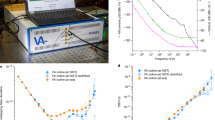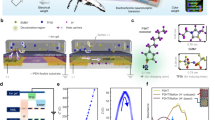Abstract
BY 1937 the biological researches at Wray Castle had reached the stage when a detailed bathymetrie survey of Windermere was desirable as a basis for studying features of the lake bed. The Hydrographer to the Admiralty kindly agreed to co-operate on the technical side, and a survey was carried out by Lieut.-Commander Farquharson, of the Admiralty's hydrographic staff, using a magneto-striction recording echo-sounding machine of Admiralty pattern manufactured by Messrs. Henry Hughes and Son, Ltd. The main feature of the recorder (Fig. 1) is a drum which is rotated at a constant speed by an electric motor. An arm attached to the drum carries a metal 'pen' which traces the record on paper moistened with solution of potassium iodide and propelled slowly through the machine. Contacts on the drum are arranged in such a manner that a supersonic sound impulse is transmitted from an oscillator, below the surface of the water, for an instant when the revolving pen has just begun its transit across the paper. The sound impulse, directed downward, is reflected from the bottom, is picked up by a receiving oscillator also mounted in the water, is amplified and passed to the pen. The rises in voltage at the pen point, consequent on the transmission and return of the signal, cause electrolysis of the potassium iodide and produce brown stains of iodine on the paper—one, the zero mark, at the instant of transmission, and the second on the reception of the echo. The distance along the are of the pen's track between these two marks represents the depth of water, and the process, repeated at each revolution of the drum, gives a continuous record of depth. The whole equipment, consisting of the recorder, amplifier, oscillators and 12-volt accumulator, can be mounted comfortably in a small launch or rowing boat.
This is a preview of subscription content, access via your institution
Access options
Subscribe to this journal
Receive 51 print issues and online access
$199.00 per year
only $3.90 per issue
Buy this article
- Purchase on Springer Link
- Instant access to full article PDF
Prices may be subject to local taxes which are calculated during checkout
Similar content being viewed by others
References
Jenkin, B. M., and Mortimer, C. H., NATURE, 142, 834 (1938).
Mill, H. R., Geog. J., 6, 46–73, 135–166 (1895).
Pearsall, W. H., Proc. Roy. Soc., B, 92, 259–84 (1921).
Stocks, T., Naturwiss., 23, 383–87 (1935).
Rust, H., Naturwiss., 23, 387–89 (1935).
Mortimer, C. H., Geog. J., in the press.
Author information
Authors and Affiliations
Rights and permissions
About this article
Cite this article
MORTIMER, C., WORTHINGTON, E. A New Application of Echo-Sounding. Nature 145, 212–214 (1940). https://doi.org/10.1038/145212a0
Issue Date:
DOI: https://doi.org/10.1038/145212a0
This article is cited by
-
The Study of Lake Deposits
Nature (1941)
Comments
By submitting a comment you agree to abide by our Terms and Community Guidelines. If you find something abusive or that does not comply with our terms or guidelines please flag it as inappropriate.



